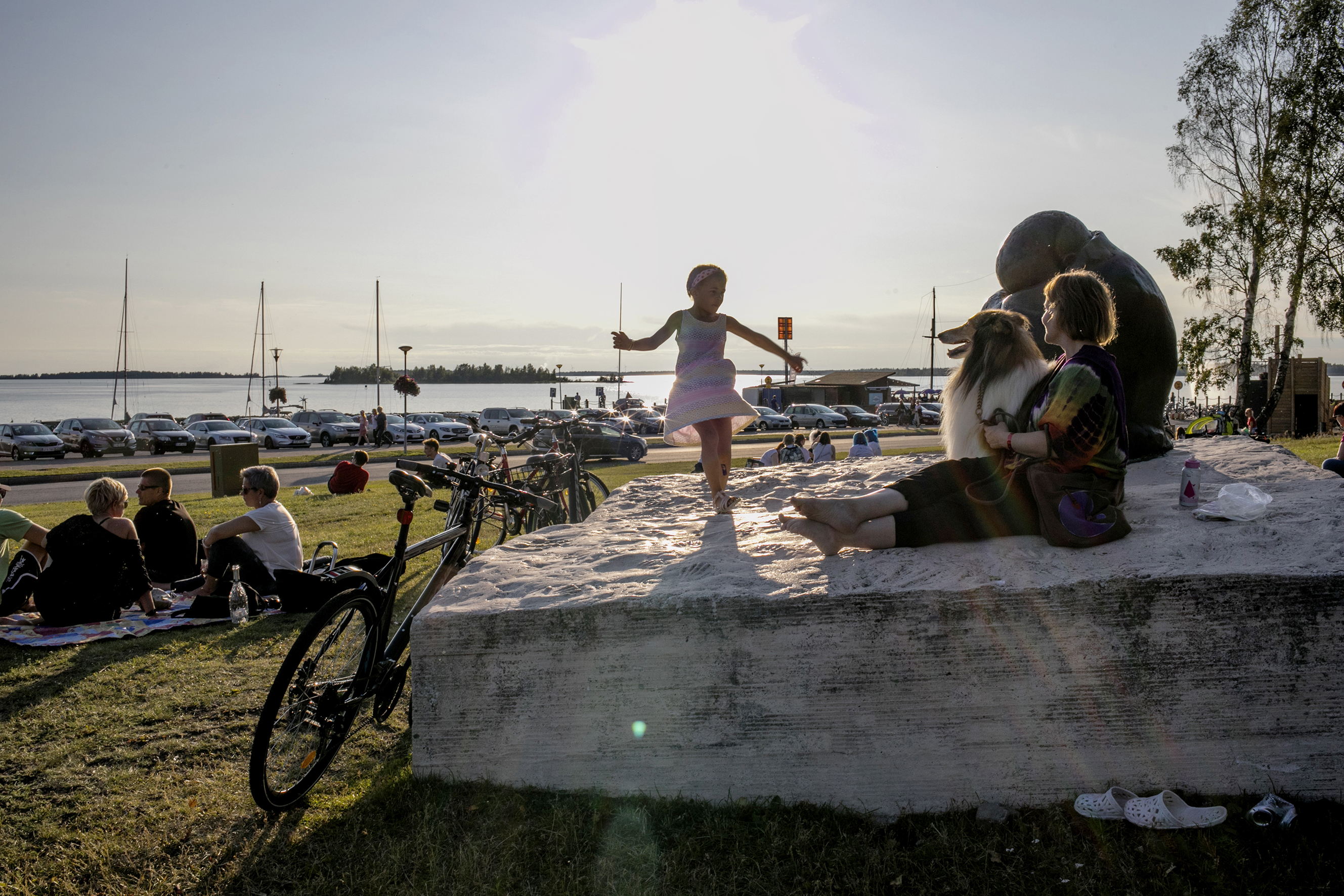Public Art
There are almost a hundred public works of art, statues and monuments in Kemi. You can also find dozens of sculptures and monuments in the local cemeteries. In addition to the town’s architecture, public art is one of the most visible elements of Kemi’s cityscape.
Public art means works of art in public spaces. The most typical types of public art include, for example, statues, landmarks, monuments, sculptures, murals and works of environmental art.
‘The Praying Soldier’, a 1918 Civil War monument located in Kemi’s Kirkkopuisto park is Kemi’s first public monument. It was designed by sculptor Evert Porila (1887–1941) in 1924. The latest public monument was unveiled in October 2018 in Selkäsaari commemorating those executed in Selkäsaari during the Civil War.
The city’s most visible and eye-catching works of public art include Ukkometto (Aimo Taleva, 1982) at the end of Meripuistokatu, and the wall mural Prosperity (Wild Drawing, 2016), located at Keskuspuistokatu.
Kemi has been a pioneer in the so-called percentage policy in Finland. The percentage policy means that when public buildings are designed, about one percent of the construction costs are set aside for the artistic improvement of the building or its surroundings. A recommendation to deploy the percentage policy was recorded in Kemi City Council already in the 1960s. Percentage policy art in Kemi has been implemented, for example, in the Kävelykatu, Kivikko and Syväkangas schools, as well as in the Lappia Vocational College building at Meripuistokatu.
These pages will give you information about works of public art and monuments in the parks, streets, squares and public buildings of Kemi.
